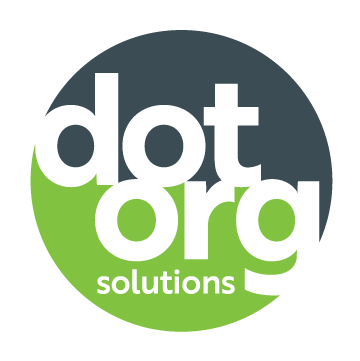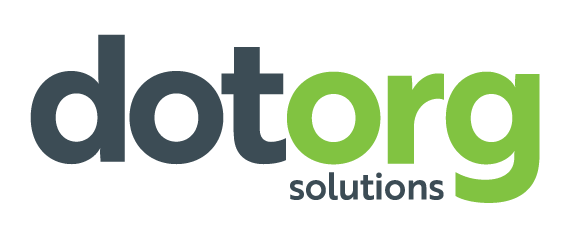Three ways digital marketing can help nonprofits connect with constituents
Nonprofits know connecting with constituents is essential to spreading your message and raising funds to further your mission. What nonprofit professionals might not know is how to use digital marketing to accomplish these primary goals. You might have a good system of sending out a regular newsletter, posting on social media and occasionally updating your website (which are great places to start!) Maybe you’re interested in exploring ways digital marketing can help your organization but aren’t sure where to begin. Or perhaps you’ve heard confusing terms like bounce rate, impressions and click-through rate but don’t know what they mean. It’s a lot, we know. Before we can tackle how to implement digital marketing into your marketing plan, it’s important to take a step back to understand how digital marketing is used to connect with your constituents.
One of the most important aspects of digital marketing is getting in front of users at all parts of what for-profit companies call the “consumer journey.” While your nonprofit isn’t necessarily selling a product, this journey is still the same for your constituents. We like to call this the “supporter journey”: following users from the moment someone first becomes aware of your organization to the point where they become a loyal, committed supporter, volunteer, donor or more.
Understanding the supporter journey is important when setting up marketing efforts and identifying your goals. If you’re unsure where to start, answer this question: Which one of these three main goals do I want to accomplish?
- Raise awareness and increase branding for our organization.
- Reach people who may already be aware of our organization with a specific message.
- Encourage followers of our organization to take action.
These are the three main phases of the supporter journey: awareness, consideration and decision. These phases are used to not only implement specific digital marketing strategies, but also track certain metrics at each state of the journey in order to evaluate campaign success and ultimately gain more loyal supporters.
Tracking metrics at each stage of the supporter journey can also help you understand how your digital marketing efforts are working to move people from one stage to the next. We’ve detailed the three main phases of the supporter journey and what metrics you should be evaluating consistently to ensure the success of both your marketing goals and connection with your constituents.
Awareness stage
This is the stage where people first become aware of your nonprofit and its mission. They might have heard your name through a friend, stumbled upon your Facebook page or connected at an event. Whatever way they were introduced to your organization, it’s important to remain connected and keep your organization front of mind. Digital strategies to help you accomplish this might be Google Display ads, Facebook ads, Instagram ads or short-form video content. These specific strategies will help spread your name, message and mission to people who may have never heard of your business before. Tools like Google, Facebook and Instagram have audience-targeting features that allow you to target your messaging to a specific audience based on detailed demographics, such as age and interest. Metrics to track at this stage could include:
- Impressions: The number of times your content is viewed.
- Reach: The number of unique people who see your content.
- Video views: The number of people who watch your videos.
Consideration stage
This is the stage where people are considering whether or not to follow your nonprofit closer and eventually support you. For your constituent, this might look like following your Facebook page or browsing your website to learn more about your organization. Digital strategies that align with the consideration stage include a monthly newsletter email, Google Ad Grant search ads or Facebook posts. These marketing efforts include followers who are already familiar with your nonprofit and encourage them to learn more about what your organization has to offer. Metrics to track at this stage could include:
- Website traffic: The number of people who visit your website.
- Time on site: How long people spend on your website.
- Bounce rate: What percentage of people are leaving your site without viewing another page or taking action.
- Pages per session: The number of pages people visit on your website.
- Email open rates: The percentage of people who open your emails.
- Click-through rate (CTR): The percentage of people who click on your ads or content after seeing them.
- Cost-per click (CPC): The average cost per click from your ad to your website.
- Social media engagement: Likes, shares and comments on your social media posts.
Decision stage
This is the stage where people decide to support your nonprofit and continue to follow you for future opportunities to engage and support. This might include regularly attending events, becoming a loyal donor or committed volunteer. In the decision stage, your marketing goal is to encourage followers to take action and move from following your business to actively supporting and staying loyal to your organization. Strategies you could implement include a donation campaign email, social ads looking for volunteer sign-ups or Google Ad Grants search ads focused on hiring. Metrics to track at this stage could include:
- Form submissions: The number of people who complete a form on your website, whether it’s a donation, volunteer sign-up or newsletter submission.
- Conversion rate: The percentage of people who complete a desired action.
- Thank-you page views: The number of people who see your thank-you page after completing an action on your website.
- Phone calls: People who call your nonprofit to learn more about opportunities to support.
Understanding the supporter journey can help you use your digital marketing resources to create loyal supporters of your nonprofit. Monitoring these metrics and analyzing them over time will also help you gain insight into what's working and what strategies you need to adjust. Our “Basic digital metrics nonprofits should know and understand” blog can also help you understand important terms along the way.
Using this information can help you optimize your campaigns and improve the overall supporter journey, which will help you build a stronger, more engaged community of volunteers, donors and other supporters who are committed to your cause.
Like what you read? Subscribe to our weekly blog and it will be delivered directly to your inbox!

Dot Org Content Team
Dot Org Solutions works with nonprofits of all types to raise more money, communicate effectively and educate their constituents so they can build better communities. Our proven systems and years of experience help reduce the anxiety and stress felt by nonprofit teams, giving them more time to focus on other important things.

